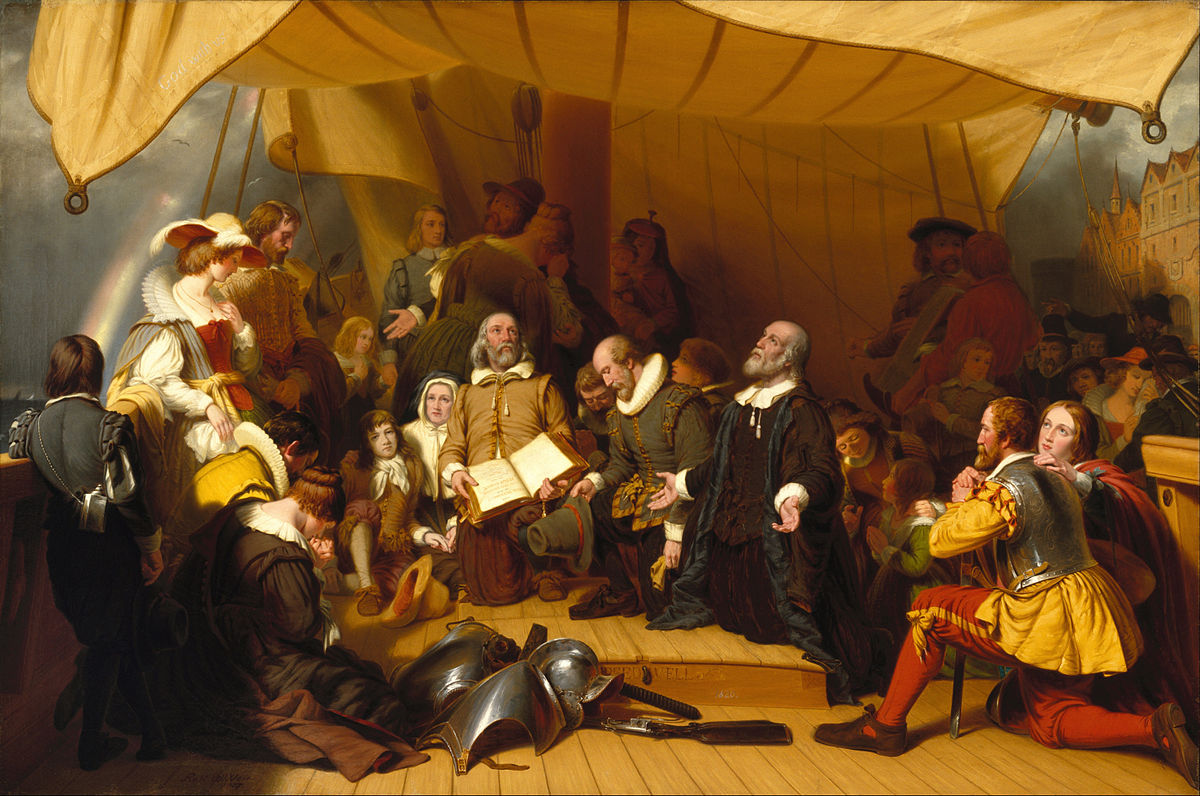
Pilgrims establish Plymouth Colony
Plymouth Rock, Water Street, PThe Pilgrims were a small group of Puritan separatists who felt that they needed to physically distance themselves from the Church of England. They initially moved to the Netherlands, then decided to re-establish themselves in America. The initial Pilgrim settlers sailed to North America in 1620 on the Mayflower. Upon their arrival, they drew up the Mayflower Compact, by which they bound themselves together as a united community, thus establishing the small Plymouth Colony. William Bradford was their main leader. After its founding, other settlers traveled from England to join the colony.
The non-separatist Puritans constituted a much larger group than the Pilgrims, and they established the Massachusetts Bay Colony in 1629 with 400 settlers. They sought to reform the Church of England by creating a new, pure church in the New World. By 1640, 20,000 had arrived; many died soon after arrival, but the others found a healthy climate and an ample food supply. The Plymouth and Massachusetts Bay colonies together spawned other Puritan colonies in New England, including the New Haven, Saybrook, and Connecticut colonies. During the 17th century, the New Haven and Saybrook colonies were absorbed by Connecticut.
The Puritans created a deeply religious, socially tight-knit, and politically innovative culture that still influences the modern United States. They hoped that this new land would serve as a "redeemer nation". They fled England and attempted to create a "nation of saints" or a "City upon a Hill" in America: an intensely religious, thoroughly righteous community designed to be an example for all of Europe.
Economically, Puritan New England fulfilled the expectations of its founders. The Puritan economy was based on the efforts of self-supporting farmsteads that traded only for goods which they could not produce themselves, unlike the cash crop-oriented plantations of the Chesapeake region. There was a generally higher economic standing and standard of living in New England than in the Chesapeake. New England became an important mercantile and shipbuilding center, along with agriculture, fishing, and logging, serving as the hub for trading between the southern colonies and Europe.
